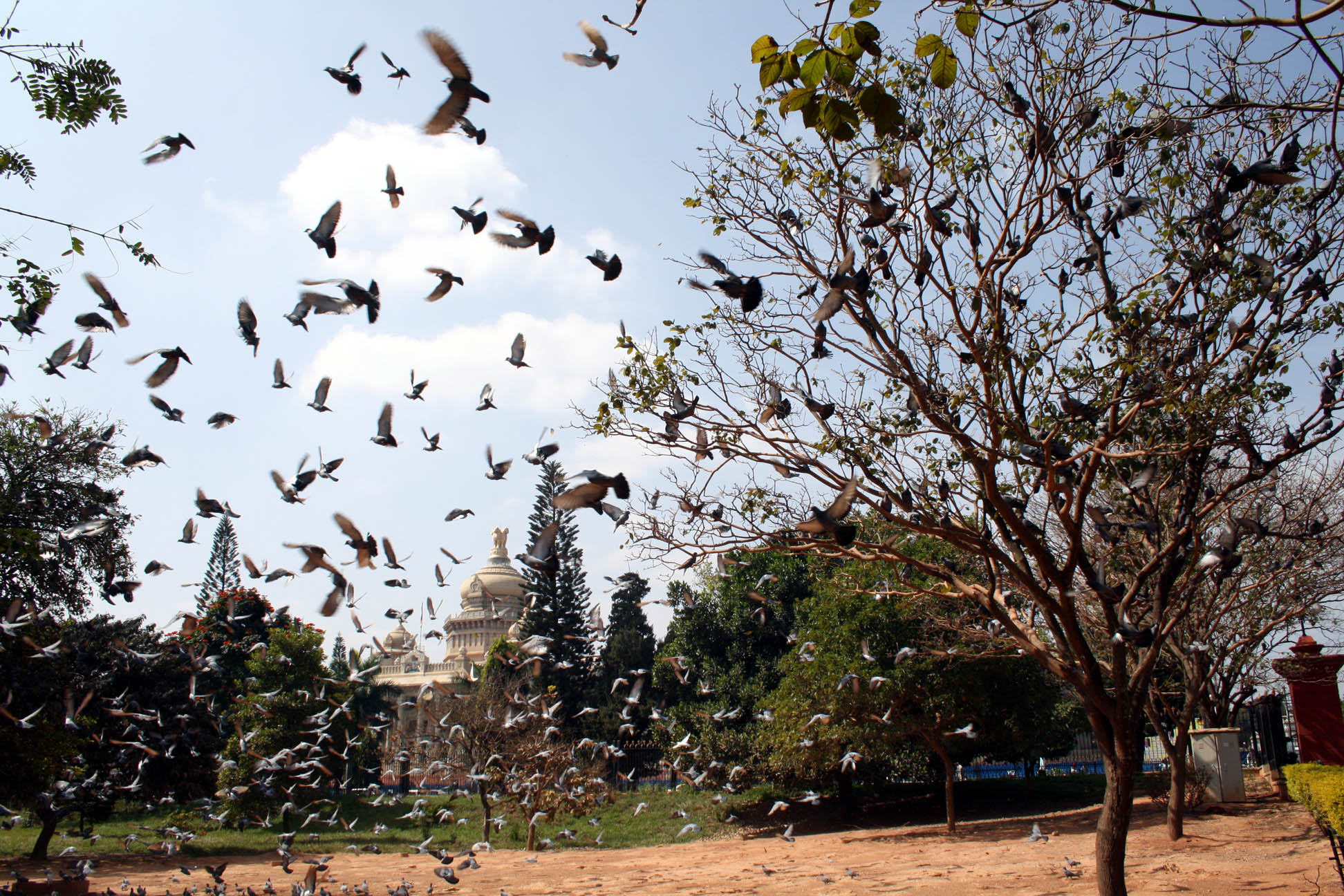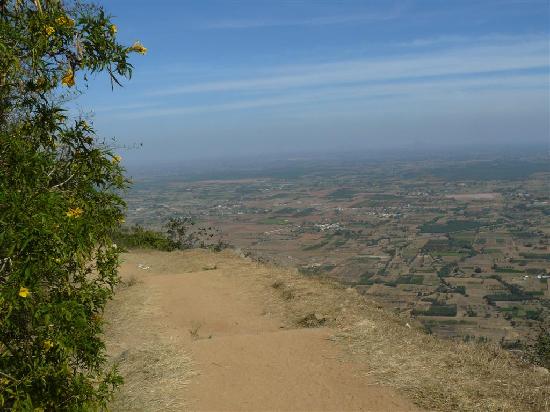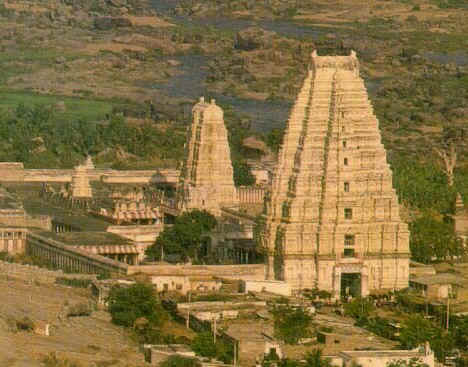
Goa is India's smallest state by area and the fourth smallest by population. Located on India's west coast in the region known as the Konkan, it is bounded by the state of Maharashtra to the north, and by Karnataka to the east and south, while the Arabian Sea forms its western coast. Goa is India's richest state with a GDP per capita two and a half times that of the country as a whole. It was ranked the best placed state by the Eleventh Finance Commission for its infrastructure and ranked on top for the best quality of life in India by the National Commission on Population based on the 12 Indicators.

Panaji is the state's capital, while Vasco da Gama is the largest city. The historic city of Margao still exhibits the cultural influence of thePortuguese, who first landed in the early 16th century as merchants, and conquered it soon thereafter. The Portuguese overseas territory existed for about 450 years, until it was annexed by India in 1961.


Renowned for its beaches, places of worship and world heritage architecture, Goa is visited by large numbers of international and domestic tourists each year. It also has rich flora and fauna, owing to its location on the Western Ghats range, which is classified as abiodiversity hotspot.
HISTORY
Goa's known history stretches back to the 3rd century BC, when it formed part of the Mauryan Empire, ruled by the Buddhist emperor, Ashokaof Magadha. Buddhist monks laid the foundation of Buddhism in Goa. Between the 2nd century BCE and the 6th century CE, Goa was ruled by the Chutus of Karwar as feudatories of the Satavahanas of Kolhapur (2nd century BCE to the 2nd century CE), Western Kshatrapas (around 150 CE), the Abhiras of Western Maharashtra, Bhojas of the Yadava clans of Gujarat, and
Goa's known history stretches back to the 3rd century BC, when it formed part of the Mauryan Empire, ruled by the Buddhist emperor, Ashokaof Magadha. Buddhist monks laid the foundation of Buddhism in Goa. Between the 2nd century BCE and the 6th century CE, Goa was ruled by the Chutus of Karwar as feudatories of the Satavahanas of Kolhapur (2nd century BCE to the 2nd century CE), Western Kshatrapas (around 150 CE), the Abhiras of Western Maharashtra, Bhojas of the Yadava clans of Gujarat, and

the Konkan Mauryas as feudatories of theKalachuris.The rule later passed on to the Chalukyas of Badami, who controlled it between 578 to 753, and later the Rashtrakutas ofMalkhed from 753 to 963. However from 765 to 1015, the Southern Silharas of Konkan ruled Goa as the feudatories of the Chalukyas and the Rashtrakutas. Over the next few centuries, Goa was successively ruled by the Kadambas as the feudatories of the Chalukyas of Kalyani. They patronised Jainism in Goa.
In 1312, Goa came under the governance of the Delhi Sultanate. However, the kingdom's grip on the region was weak, and by 1370 they were forced to surrender it to Harihara I of the Vijayanagara empire. The Vijayanagara monarchs held on to the territory until 1469, when it was appropriated by the Bahmani sultans of Gulbarga.
In 1312, Goa came under the governance of the Delhi Sultanate. However, the kingdom's grip on the region was weak, and by 1370 they were forced to surrender it to Harihara I of the Vijayanagara empire. The Vijayanagara monarchs held on to the territory until 1469, when it was appropriated by the Bahmani sultans of Gulbarga.

After that dynasty crumbled, the area fell to the hands of the Adil Shahis of Bijapur who established as their auxiliary capital the city known under the Portuguese as Velha Goa.
In 1510, the Portuguese defeated the ruling Bijapur kings with the help of a local ally, Timayya, leading to the establishment of a permanent settlement in Velha Goa .The Portuguese converted a large portion of their subjects in Goa to Christianity. The repeated wars of the Portuguese with the Marathas and the Deccan sultanate, along with the repressive religious policies of Portuguese led to large migrations of Goans to neighbouring areas. Goa was occupied by the British between 1812 and 1815 during the Napoleonic Wars.
In 1843 the capital was moved to Panjim from Velha Goa. By the mid-18th century the area under occupation had expanded to most of Goa's present day state limits. Simultaneously the Portuguese lost other possessions in India until their borders stabilised and formed the Estado da India Portuguesa, of which Goa was the largest territory.
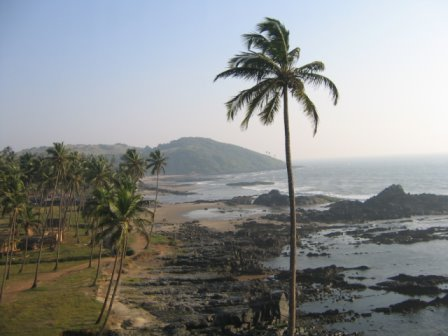
In 1510, the Portuguese defeated the ruling Bijapur kings with the help of a local ally, Timayya, leading to the establishment of a permanent settlement in Velha Goa .The Portuguese converted a large portion of their subjects in Goa to Christianity. The repeated wars of the Portuguese with the Marathas and the Deccan sultanate, along with the repressive religious policies of Portuguese led to large migrations of Goans to neighbouring areas. Goa was occupied by the British between 1812 and 1815 during the Napoleonic Wars.
In 1843 the capital was moved to Panjim from Velha Goa. By the mid-18th century the area under occupation had expanded to most of Goa's present day state limits. Simultaneously the Portuguese lost other possessions in India until their borders stabilised and formed the Estado da India Portuguesa, of which Goa was the largest territory.

After India gained independence from the British in 1947, Portugal refused to negotiate with India on the transfer of sovereignty of their Indian enclaves. On 12 December 1961, the Indian Army commenced with Operation Vijay resulting in the annexation of Goa, Damman and Diu into the Indian union. Goa, along

withDaman and Diu was made into a centrally administered Union Territory of India. On 30 May 1987, the Union Territory was split, and Goa was made India's twenty-fifth state, with Daman and Diu remaining Union Territories.
GEOGRAPHY AND CLIMATE
Goa encompasses an area of 3,702 km² . It lies between the latitudes 14°53′54″ N and 15°40′00″ N and longitudes 73°40′33″ E and 74°20′13″ E. Most of Goa is a part of the coastal country known as the Konkan, which is an escarpment rising up to the Western Ghatsrange of mountains, which separate it from the Deccan Plateau. The highest point is the Sonsogor, with an altitude of 1,167 meters . Goa has a coastline of 101 km .

Goa's main rivers are the Mandovi, the Zuari, the Terekhol, Chapora River and the Sal. The Mormugao harbour on the mouth of the River Zuari is one of the best natural harbours in South Asia. The Zuari and the Mandovi are the lifelines of Goa, with their tributaries draining 69% of its geographic area. These rivers are one of the busiest rivers in India. Goa has more than forty estuarine, eight marine and about ninety riverine islands. The total navigable length of Goa's rivers is 253 km . Goa has more than three hundred ancient tanks built during the rule of the Kadamba dynasty and over a hundred medicinal springs.


Most of Goa's soil cover is made up of laterites which are rich in ferric aluminium oxides and reddish in colour. Further inland and along the riverbanks, the soil is mostly alluvial and loamy. The soil is rich in minerals and humus, thus conducive to plantation. Some of the oldest rocks in the Indian subcontinent are found in Goa between Molem and Anmod on Goa's border with Karnataka. The rocks are classified as Trondjemeitic Gneiss estimated to be 3,600 million years old, dated by the Rubidium isotope dating method. A specimen of the rock is exhibited in the Goa University.
Goa, being in the tropical zone and near the Arabian Sea, has a hot and humid climate for most of the year. The month of May is the hottest, seeing day temperatures of over 35 °C coupled with high humidity. The monsoon rains arrive by early June and provide a much needed respite from the heat. Most of Goa's annual rainfall is received through the monsoons which last till late September.

Goa, being in the tropical zone and near the Arabian Sea, has a hot and humid climate for most of the year. The month of May is the hottest, seeing day temperatures of over 35 °C coupled with high humidity. The monsoon rains arrive by early June and provide a much needed respite from the heat. Most of Goa's annual rainfall is received through the monsoons which last till late September.

Goa has a short winter season between mid-December and February. These months are marked by nights of around 20 °C and days of around 29 °C with moderate amounts of humidity. Further inland, due to altitudinal gradation, the nights are a few degrees cooler. During March 2008 Goa was lashed with heavy rain and strong winds. This was the first time in 29 years that Goa had seen rain during March.
Goa's gross state domestic product for 2007 is estimated at $3 billion in current prices. Goa is one of India's richest states with the highest GDP per capita and two and a half times that of the country as a whole, and one of its fastest growth rates: 8.23% (yearly average 1990–2000).Tourism is Goa's primary industry: it handles 12%[15] of all foreign tourist arrivals in India. Goa has two main tourist seasons: winter and summer. In the winter time, tourists from abroad (mainly Europe) come to Goa to enjoy the splendid climate. In the summer time (which, in Goa, is the rainy season), tourists from across India come to spend the holidays.

ECONOMY

The land away from the coast is rich in minerals and ores and mining forms the second largest industry. Mining in Goa focuses on ores ofiron, Bauxite, manganese, clays, limestone and silica. The Marmagao Port handled 31.69 million tonnes of cargo last year, and accounts for over 39% of India's Iron Ore exports. The leaders in the Goan Iron Ore industry include Sesa Goa (now owned by Vedanta Resources) and Dempo. Rampant mining in areas rich in Iron Ore and other minerals is now threatening the forest cover as well as posing a health hazard to the local population. Mining corporations are also indulging in illegal mining in some areas without proper permits.


Agriculture, while of shrinking importance to the economy over the past four decades, offers part-time employment to a sizable portion of the populace. Rice is the main agricultural crop, followed by areca, cashew and coconut. The fishing industry provides employment for about forty thousand people, though recent official figures indicate a decline of the importance of this sector and also a fall in catch, perhaps coupled with the fact that traditional fishing has given way to large-scale mechanised trawling.
Medium scale industries include the manufacturing of pesticides, fertilisers, tyres, tubes, footwear, chemicals, pharmaceuticals, wheatproducts, steel rolling, fruits and fish canning, cashew nuts, textiles, brewery products.

Medium scale industries include the manufacturing of pesticides, fertilisers, tyres, tubes, footwear, chemicals, pharmaceuticals, wheatproducts, steel rolling, fruits and fish canning, cashew nuts, textiles, brewery products.

The Goa government has recently decided to not allow any more special economic zones (SEZs) in Goa. This is in stark contrast to policy followed by other states of India. SEZs are known to bring tax revenues for the government and employment option for local citizens since industries flock there for lower tax rates as compared to other areas. Currently there are 16 planned SEZs in Goa. This decision was taken by state government after strong opposition to SEZs by political parties and Goa Catholic Church.
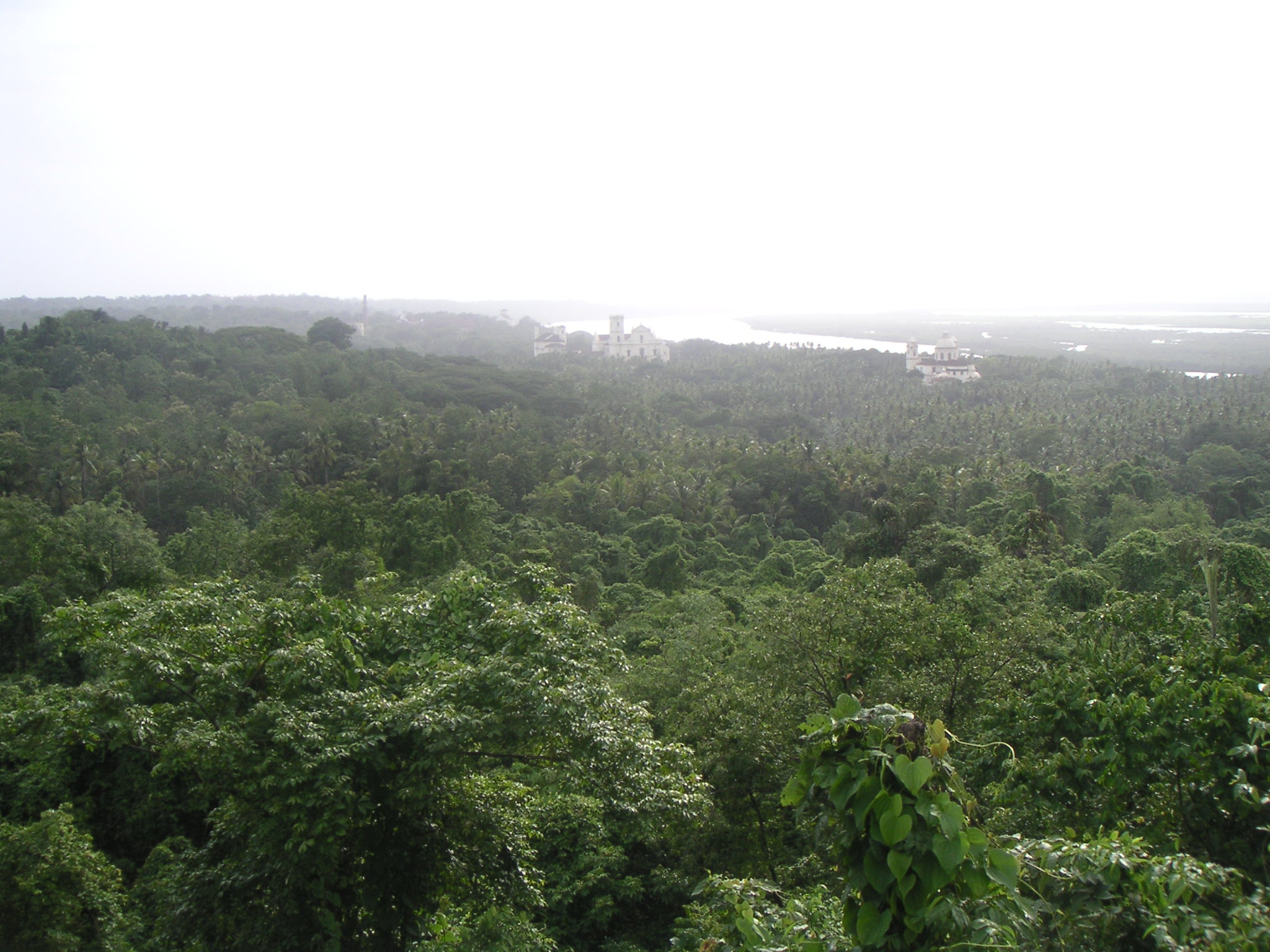

Goa is also notable for its low beer, wine and spirits prices due to its very low excise duty on alcohol. Another source of cash inflow into the state comes from many of its citizens who work abroad and remit money to their families.
Goa's sole airport, the Dabolim Airport, is both a military and civilian airport catering to domestic and international airlines that stop en route to other Indian destinations. The airport also handles a large number of chartered flights. Goa receives international flights
TRANSPORT

from Dubai,Sharjah and Kuwait in the Middle East and from Britain, Germany and Russia during the charter flight tourist season. Dabolim Airport is serviced by the following carriers – Air India,Indian Airlines, Kingfisher Airlines, Go Air, SpiceJet, Jet Airways besides Charter flights from the UK, Russia, Germany operated by Thomas Cook, Condor, Monarch Airlines etc.
Goa's public transport largely consists of privately operated buses linking the major towns to rural areas. Government-run buses, maintained by the Kadamba Transport Corporation, links both major routes (like the Panjim–Margao route) and some remote parts of the state. In large towns such as Panjim and Margao, intra-city buses ply. However, public transport in Goa is less developed, and residents depend heavily on their own transport, usually motorised two-wheelers. Goa has two National Highways passing through it. NH-17 runs along India's west coast and links Goa to Mumbai in the north and Mangalore to the south. NH-4A running across the state connects the capital Panjim to Belgaum in east, linking Goa to cities in the Deccan. The NH-17A connects NH-17 to Mormugao Harbour from Cortalim, and the new NH-17B, is a four lane highway
Goa's public transport largely consists of privately operated buses linking the major towns to rural areas. Government-run buses, maintained by the Kadamba Transport Corporation, links both major routes (like the Panjim–Margao route) and some remote parts of the state. In large towns such as Panjim and Margao, intra-city buses ply. However, public transport in Goa is less developed, and residents depend heavily on their own transport, usually motorised two-wheelers. Goa has two National Highways passing through it. NH-17 runs along India's west coast and links Goa to Mumbai in the north and Mangalore to the south. NH-4A running across the state connects the capital Panjim to Belgaum in east, linking Goa to cities in the Deccan. The NH-17A connects NH-17 to Mormugao Harbour from Cortalim, and the new NH-17B, is a four lane highway

connecting Mormugao Harbour to NH-17 at another location, Verna, via Dabolim airport. Goa has a total of 224 km of National highway, 232 km of state highway and 815 km of district highway.
Hired forms of transport include unmetered taxis, and, in urban areas, auto rickshaws. A unique form of transport in Goa is the Motorcycle taxi, operated by drivers who are locally called "pilots". These vehicles transport a single pillion rider, at fares that are usually negotiated. River crossings in Goa are serviced by flat-bottomed ferry boats, operated by the river navigation departments. Goa has two rail lines..........one run by the South Western Railway and the other by the Konkan Railway. The line run by the South Western Railway was built during the colonial era linking the port town of Vasco da Gama, Goa with Hubli, Karnataka via Margao.
Hired forms of transport include unmetered taxis, and, in urban areas, auto rickshaws. A unique form of transport in Goa is the Motorcycle taxi, operated by drivers who are locally called "pilots". These vehicles transport a single pillion rider, at fares that are usually negotiated. River crossings in Goa are serviced by flat-bottomed ferry boats, operated by the river navigation departments. Goa has two rail lines..........one run by the South Western Railway and the other by the Konkan Railway. The line run by the South Western Railway was built during the colonial era linking the port town of Vasco da Gama, Goa with Hubli, Karnataka via Margao.

The Konkan Railway line, which was built during the 1990s, runs parallel to the coast connecting major cities on the western coast.
The Mormugao harbour near the city of Vasco handles mineral ore, petroleum, coal and international containers. Much of the shipments consist of minerals and ores from Goa's hinterland. Panjim, which is situated on the banks of the Mandovi, also has a minor port, which used to handle passenger steamers between Goa and Mumbai till the late 1980s. There was also a short-lived catamaran service linking Mumbai and Panaji operated by Damania Shipping in the 1990S.
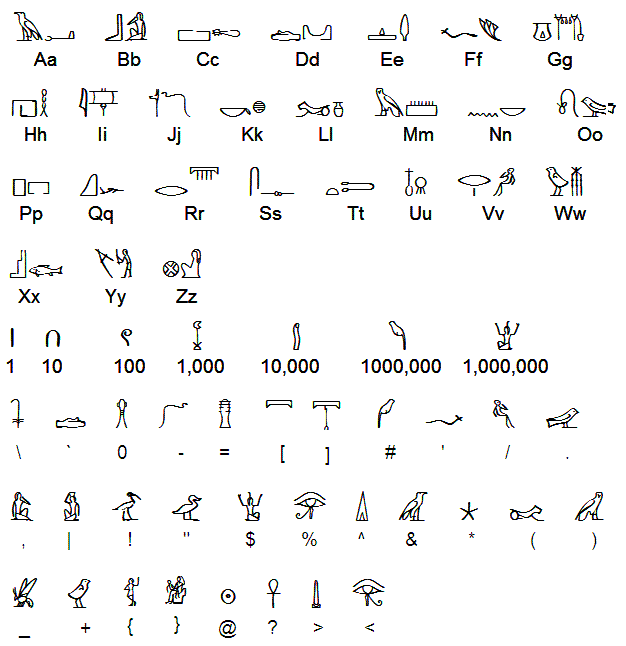 The Goa, Daman and Diu Official Language Act, 1987 makes Konkani in the Devanagari script the sole official language of Goa, but provides that Marathi may also be used "for all or any of the official purposes". The Government also has a policy of replying in Marathi to correspondence received in Marathi. Whilst there have been demands for according Marathi and Konkani in Roman script co-equal status in the state, As of October 2008, Konkani remained the sole official language.
The Goa, Daman and Diu Official Language Act, 1987 makes Konkani in the Devanagari script the sole official language of Goa, but provides that Marathi may also be used "for all or any of the official purposes". The Government also has a policy of replying in Marathi to correspondence received in Marathi. Whilst there have been demands for according Marathi and Konkani in Roman script co-equal status in the state, As of October 2008, Konkani remained the sole official language.

The Mormugao harbour near the city of Vasco handles mineral ore, petroleum, coal and international containers. Much of the shipments consist of minerals and ores from Goa's hinterland. Panjim, which is situated on the banks of the Mandovi, also has a minor port, which used to handle passenger steamers between Goa and Mumbai till the late 1980s. There was also a short-lived catamaran service linking Mumbai and Panaji operated by Damania Shipping in the 1990S.
LANGUAGES


Konkani is spoken as a native language by about 61.21% ~~~of the people in the state. Other linguistic minorities in the state as of 1991 are Marathi <27.12%>, Kannada <3.41%>, Urdu<2.81%>, and Hindi <2.09%>. The Portuguese language, which was used during the colonial era is less popular now.
 Tourism is generally focused on the coastal areas of Goa, with decreased tourist activity inland.
Tourism is generally focused on the coastal areas of Goa, with decreased tourist activity inland.
Goa has two main tourist seasons: winter and summer. In the winter time, tourists from abroad (mainly Europe) come to Goa to enjoy the splendid climate. In the summertime (which, in Goa, is the rainy season), tourists from across India come to spend the holidays.

TOURISM

Goa has two main tourist seasons: winter and summer. In the winter time, tourists from abroad (mainly Europe) come to Goa to enjoy the splendid climate. In the summertime (which, in Goa, is the rainy season), tourists from across India come to spend the holidays.

With the rule of the Portuguese for over 450 years and the consequential influence of Portuguese culture, Goa presents a somewhat different picture to the foreign visitor than other parts of the country. The state of Goa is famous for its excellent beaches, churches, and temples. The Bom Jesus Cathedral, Fort Aguada and a new a wax museum on Indian history, culture and heritage in Old Goa are other tourism destinations.

